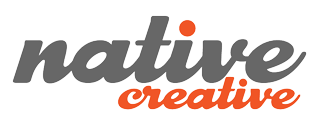Do you recall your very first handshake? Probably not. With any luck, you might be able to remember your very last. Thanks to COVID-19 and the concept of “social distancing,” we may have seen the end of the handshake as a standard greeting. Perhaps one day, the handshake will linger on as the greeting of outlaws.
A specific instance does not stand out, but I vaguely remember, as a child, first being asked to shake hands with one of my dad’s friends or colleagues. It was a small, early step toward manhood. That firm grasp. A quick pump and release. A sparkle in his eyes that said you had passed the test.
Thanks for the dead fish
I also remember the first time I met someone who failed the test. As my career took me to Japan, in 1990, and for some time after, it was still possible to meet a grown man who had no idea how to shake hands. I will never forget the sensation I felt as I made contact with his clammy hand. It was as if someone had placed a dead fish in my palm. To a Westerner, you could not make a worse first impression.
For some reason, I associate the handshake with masculinity, but I have certainly shaken hands with plenty of women. Many of them were my bosses. My mother taught me that it’s considerate to allow the lady to take your hand first and set the terms of the embrace. The logic being that women generally tend to wear more rings and more elaborate rings than men. It can be torturous to have your fingers crushed between the very rings you are wearing.
Along the way, I learned other forms of hand greetings. I can distinctly remember, back in the lately 1960s, one of my sisters asking me to give her some skin and sticking out her palm flat in from of me. I had no idea what she meant.
It wasn’t long before “Gimme five” was common parlance, but it would be awhile before the “high five” would become the standard celebratory greeting in the sports world, foreshadowing the “low five” and the “fist pump.” Whatever happened to the “high ten”?
A hand full of soul
Early in my teens, in the late ‘70s, I remember my friend’s brother, who had served in Viet Nam recently enough to still hang out in his regulation army jacket (along with his beard and ponytail), teaching us the “cool” handshake. Elbows pointed down, fist straight up, hands clasped as in prayer.
From that point on, I had two handshakes: the one I used with all my friends and anyone I wanted to think I was cool (or normal), and the straight-ahead one I used with older folks, relatives and figures of authority, like the church pastor.
You’re not my brother
In my freshman year of college, I discovered that to some people there’s a racial element to the handshake one chooses. I will never forget this line. “Keep it white, Tom. Keep it white.” Spoken by Steve Greenley, who was pointing his fingers at my elbow forcing me to give him a straight-ahead handshake. I was flabbergasted. I grasped what he was alluding to, but I knew nothing of black culture. I had grown up in a white section of New Jersey and never even interacted with a black kid until high school. Aside from one of my dad’s American Airlines colleagues (who would’ve used the business handshake), everyone I had ever shook hands with, up to that point, had been white.
Later I would learn some of the elaborate variations tacked on to the cool handshake (finger snaps, etc.), but not well enough to make me look cool while doing them. Quite the opposite, in fact. Yet, I still fondly remember that handshake as a way to express my identity as separate from the establishment.
In my college fraternity days, I would learn a “secret” handshake that involved the interlocking of certain digits, only to be used with fellow brothers. Then, one evening, at a party I was horrified when a non-brother sprung the very same handshake on me with a wicked grin. Thus, teaching me a lesson about the fickle nature of secrets.
Get ready to take a bow
After 30 years in Japan, I get much more use out of the straight-ahead handshake, despite a dearth of white people living here (har!). Moreover, bowing is still the primary greeting in business interactions, after the ceremonial business card exchange, a maneuver that includes a lot of close contact even though the fingers do not actually touch.
Is the business card exchange another greeting we will have to reconsider in the coming months and years? Perhaps. But it looks like the writing is on the wall for the future of handshakes. Bowing seems to be the best bet for whenever the post COVID-19 world starts coming together. My advice: Start practicing your bow style now.



